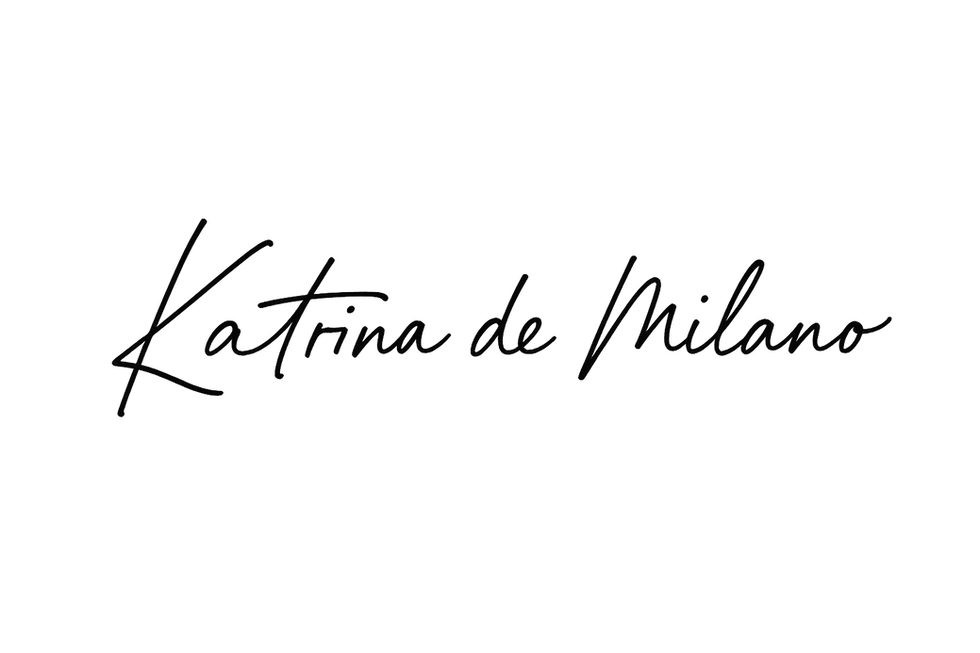✨ How to Polish Your Manuscript | Final Draft Checklist for Writers
- Katrina De Milano

- 5 июл.
- 3 мин. чтения
Because your words deserve more than a quick skim — they deserve your full attention, one final time.
You’ve written the messy draft.
You’ve rewritten. Revised. Asked for feedback. Sat with discomfort. Edited again.
Now you’re here — standing on the threshold of something real.
Your manuscript is close. So close it feels like you could reach out and hand it to someone.
But almost isn’t the same as ready.
This is the moment for a final layer of care.
A quiet round of refinement.
Not to rewrite the story — but to honor it.
Because polishing your manuscript isn’t about chasing perfection. It’s about respecting the work you’ve already done — and giving your words the treatment they deserve.
🪞 It’s Not About Perfection — It’s About Precision
Let’s be clear: polishing is not another rewrite.
It’s not about tearing your draft apart again or doubting every choice.
At this stage, your story works.
Now your job is to make it shine.
This means:
Smoothing out clunky sentences
Strengthening word choices so they feel intentional
Ensuring consistency in voice, tone, formatting, and tiny details
Trimming filler or repetition without losing heart
🎯 Think of this as your final conversation with the book before it leaves your hands.
It’s the moment you stop being the writer — and step fully into the role of editor.
📚 Copyedit Like a Pro (Even If You’re Not One)
You don’t need to be a professional editor to do a solid polish — but you do need to slow down and shift into a detail-oriented mindset.
Here’s what to watch for in your final passes:
✅ Spelling and Grammar
Yes, use tools like Grammarly, ProWritingAid, or Hemingway — but don’t rely on them blindly.
They can catch typos, but only you know the voice you’re trying to protect.
✅ Repetition
Scan for words and phrases you overuse. (We all have them.)
Try searching for:
just
that
really
suddenly
even
very
You’ll be amazed how much tighter your prose becomes with just a few trims.
✅ Consistency
Go hunting for logic gaps:
Did someone’s name change spelling halfway through?
Was a dog gray in chapter 3 and golden in chapter 9?
Did a side character’s job title mysteriously change?
Continuity errors pull readers out of the world you’ve worked so hard to build.
✅ Formatting
Make sure your manuscript is clean and professional — especially if you’re submitting to agents or publishers:
12 pt font (like Times New Roman or Garamond)
Double spacing
1-inch margins
Clear chapter breaks
Proper indentation (no tabs or odd spacing)
🛠️ Presentation doesn’t replace storytelling — but it absolutely supports it.
🧠 Read It Aloud. Yes, All of It.
There’s a reason professional editors (and actors!) do this: reading aloud is one of the most powerful editing tools at your disposal.
Why?
Because when you read aloud, you:
Hear rhythm and pacing issues
Catch awkward phrasing and sentence overload
Notice when dialogue sounds forced
Feel when your voice vanishes — or breaks tone
🎧 Bonus tip: Use a text-to-speech app. Hearing your story out loud lets you experience it the way a reader feels it.
🧰 Optional — But Incredibly Powerful: Get Professional Eyes
If your goal is publication — especially traditional or high-quality indie — consider investing in a professional editor.
They see what you can’t. They spot what you’ve stopped noticing.
Here’s a breakdown of editorial roles:
Line editor: Focuses on flow, pacing, clarity, voice
Copyeditor: Checks grammar, syntax, consistency, and style
Proofreader: Finds last-minute typos, spacing errors, formatting quirks
🧡 Can’t hire anyone? Swap final passes with another serious writer.
Even one extra pair of eyes can catch what you missed after living inside the manuscript too long.
✅ Takeaway
You’ve done the heavy lifting.
You’ve built the world, shaped the characters, fought for the right words.
Now it’s time to slow down, breathe, and polish with love — not fear.
This final stage is not about doubt.
It’s about dedication.
It’s about saying, “I believe in this story enough to do it justice.”
So take your time. Read slow. Revisit with fresh eyes.
And when you hit “Save” for the last time, do it knowing:
You gave your book everything it asked for.
💬 Your Turn to Share: What Helps You Polish Your Manuscript to the Finish Line
How do you know when you’re done?
Do you have a favorite ritual, checklist, or tool that helps you finish strong?
Have you ever over-edited — or under-edited — and learned something from it?
Drop your tips and experiences in the comments below.
This final round might be quiet and solitary — but you don’t have to go through it alone.







Comments